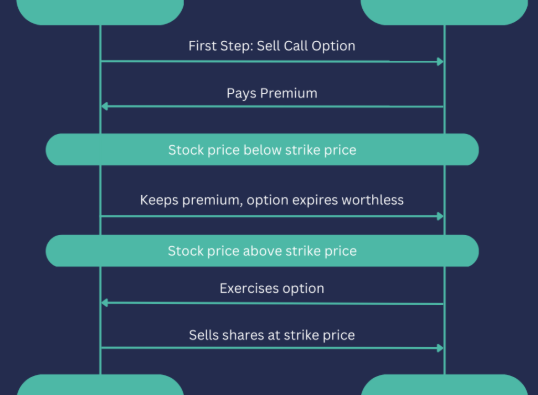
Value investing is a timeless investment strategy that focuses on buying undervalued stocks and holding them for the long term. This approach has been championed by legendary investors like Warren Buffett and Benjamin Graham and remains a powerful tool for wealth-building. In this guide, we will explore how to construct a robust value investing portfolio, offering practical steps and strategies to help you make informed decisions and achieve long-term financial success.
What is Value Investing?
At its core, value investing is about purchasing stocks that are undervalued compared to their intrinsic worth. These stocks may be priced lower than their true value due to market fluctuations, news overreactions, or short-term sentiment. Value investors seek to capitalize on these pricing inefficiencies, purchasing assets at a discount and holding them until the market corrects itself.
Key principles include:
- Intrinsic Value: Determining a company’s true worth based on its financial health, future earnings potential, and assets.
- Margin of Safety: This principle involves buying stocks at a significant discount to their intrinsic value to provide a cushion against potential losses.
- Long-Term Focus: Value investors adopt a patient, long-term investment strategy, allowing time for their investments to realize their full value.
- Fundamental Analysis: Thoroughly analyzing financial statements, company performance, and industry trends to assess a stock’s intrinsic value.
Steps to Build Your Value Investing Portfolio
Step 1: Establish Investment Goals and Risk Tolerance
The first step in building a value investing portfolio is understanding your investment goals and risk tolerance. Are you seeking steady growth, consistent income, or a blend of both? Knowing your goals will help guide your decisions.
Additionally, assess your risk tolerance. Value investing often involves holding stocks through market downturns, so it’s essential to understand how much risk you’re comfortable with in your portfolio.
Step 2: Conduct In-Depth Research
Research is vital to identifying undervalued stocks. Look into the following factors when evaluating potential investments:
- Financial Health: Study the company’s financial statements, focusing on revenue growth, profit margins, and cash flow consistency.
- Competitive Edge: Does the company have a strong position in its industry? Investigate if the company offers a unique product or service that provides an edge over competitors.
- Management Quality: Evaluate the leadership’s track record in capital allocation and strategic decision-making.
- Industry Trends: Stay informed on industry shifts that could influence the company’s future.
- Valuation Metrics: Use metrics like price-to-earnings (P/E), price-to-book (P/B), and dividend yield to determine whether a stock is undervalued relative to its peers.
Step 3: Spot Undervalued Stocks
To build a value investing portfolio, the next task is finding undervalued stocks. You can do this by:
- Using a Stock Screener: A stock screener helps filter stocks based on financial criteria such as P/E ratio or dividend yield, highlighting potential undervalued opportunities.
- Fundamental Analysis: Analyze financials and industry data to determine a company’s intrinsic value and compare it to current market price.
- Following Expert Investors: Learning from established value investors like Warren Buffett can provide valuable insights and stock suggestions.
Step 4: Diversify Your Portfolio
While value investing primarily focuses on stocks, diversification remains crucial. Spread your investments across various sectors and industries to protect your portfolio from a downturn in any one area. Diversification helps ensure stability while reducing risks tied to individual assets.
Step 5: Create a Watchlist
Compile a list of potential stocks that meet your investment criteria. Be patient as you monitor these stocks—value investing often requires waiting for the right buying opportunity. Not every stock on your watchlist will be an immediate purchase, so timing your entry is key.
Step 6: Commit to a Long-Term Strategy
Value investing demands a long-term perspective. The stock market is volatile, but by focusing on a company’s fundamentals and not short-term fluctuations, you’re more likely to see your investments realize their true potential over time.
Step 7: Set Clear Entry and Exit Criteria
Establish clear guidelines for when to buy and sell stocks. Purchase stocks only when they meet your margin of safety, and set criteria for when to exit, whether it’s due to a stock reaching its intrinsic value or facing deteriorating fundamentals.
Step 8: Monitor and Adjust Your Portfolio
While value investing is not a passive strategy, regular monitoring is essential. Track the performance of the stocks in your portfolio, ensuring they still meet your criteria. Rebalance your holdings as needed by selling overvalued stocks and purchasing those that are undervalued.
Step 9: Practice Patience and Discipline
Value investing can test your patience. Stocks may not perform as expected in the short run, and market volatility can be unsettling. However, maintaining discipline and staying focused on long-term growth is crucial for success.
Step 10: Stick to Your Plan
Consistency is key in value investing. Resist the urge to make impulsive decisions based on market noise or short-term price movements. Staying committed to your plan and being patient will help you ride out inevitable market fluctuations.
Step 11: Stay Informed and Adapt
The market is dynamic, and it’s important to remain updated on trends, economic shifts, and global events. Stay informed about changes that could affect your investments and adapt your strategy as necessary.
Conclusion
Building a value investing portfolio requires patience, discipline, and a commitment to long-term principles. By focusing on a company’s fundamentals, conducting thorough research, and maintaining a diversified, long-term approach, you can create a portfolio that grows and withstands the test of time. While value investing is a disciplined approach, continuous learning and adaptation will enable you to refine your strategy and ultimately achieve your financial goals.










